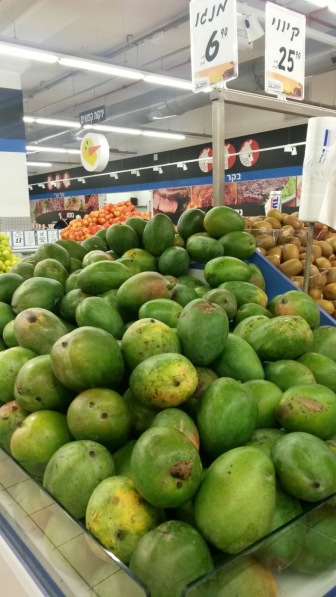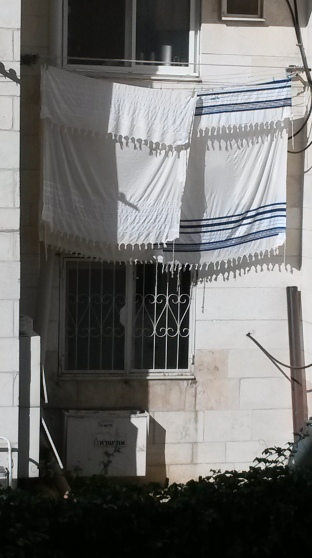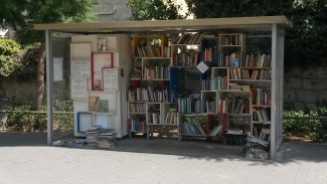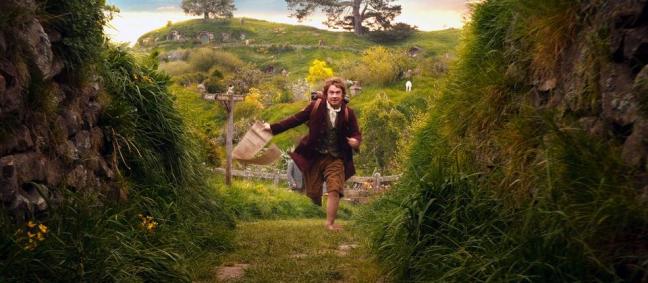Since publishing the blog below, the situation I described has developed, I hope and believe for the best. While what I wrote below remains an accurate description of the past few months, and a true reflection of my thoughts on it, it feels right to add a note here to explain the recent change, and as I will explain, it also feels right to change the title of the blog, and not to publish the 15 or so comments submitted. To those who submitted these, thank you, and I hope you will understand my reasoning.
On Friday morning, a mere few hours after my blog was published, this letter was sent to the BES community by Rabbi Chaim Kanterovitz. It sets out in no uncertain terms that Rabbi Kanterovitz holds no truck with the halachic arguments behind partnership minyanim, and it states that in his view, his congregants should not attend one. It rules that people, or to be more accurate, men, involved with a PM cannot lead prayers at his shul on the high holidays, a role with halachic import. Then, significantly for me and other educators involved in our minyan, it raises the question of teaching Torah. On this Rabbi Kanterovitz says:
“… in the interest of communal harmony and togetherness I am not placing a limitation on this. I urge the various Minyanim and groups to ensure that any Divrei Torah and talks they arrange are in line with the principles of BES. If in doubt consult me and I shall make a decision on a case by case basis depending on many different considerations and factors.”
Leaving aside for a moment the fact that there is no mention of, or expression of regret for, the ban that has been in place for at least eight months (I was stood down from teaching at BES back in March) this means that the ban has been removed. That’s good news. Really good and astonishing news! I am genuinely impressed that BES has reconsidered their position – something that is not easy to do under the glare of the public gaze, and I commend anyone who was involved. I also hold out hope that the “case by case basis” clause does not become a cover for further exclusions and that it is indeed as it is expressed – an offer for shul education coordinators to consult with the Rabbi if they are in doubt about BES principles.
It has been a difficult few months for many of us, and for those who hoped to lead services on the high holidays at BES, the feeling of alienation will continue. While issues like this remain unresolved, and while we still differ, it is my hope that we – Borehamwood shul and Kehillat Nashira – can move forward now. I echo Rabbi Kanterovitz’s encouragement to pursue togetherness and friendship. In that vein, I’ve decided not to publish the comments submitted on this blog, because some were more critical of BES than I have been, and I don’t think these sentiments are helpful now. Others were critical of my position, and that’s OK. Most expressed support, or shared interesting comparisons with other religious communities. It seemed fairest not to pick and choose. I’ve also changed the title of the blog, because I hope I’m no longer on my shul’s blacklist, and I’m trying to move beyond the hurt…
Blog originally published on 17/11/16 under the title: “I’m on my shul’s blacklist. And it hurts”
I had hoped not to have to write about this on my blog, but given that today’s Jewish Chronicle is covering Borehamwood and Elstree Shul’s (synagogue) ban on Partnership Minyan leaders speaking, here is my commentary on the short statement I gave there. If you’re not interested in Jewish community politics, look away now. You’ll probably be happier that way anyway.

So here’s what happened. Arrangements had been made for me to talk to a group of bat mitzvah students at Borehamwood and Elstree shul. To give some context, I’ve taught at BES over the years, including at tikkun leil and for the youth. I was chair of the education committee for a year. I’ve taught bat mitzvah students for years. So this gig didn’t feel out of the ordinary… until I received a phone call saying that the Rabbi has decided that I was to be disinvited from speaking.
The reason – my involvement with the wonderful Borehamwood Partnership Minyan, Kehillat Nashira, a community which has brought meaning and connection to hundreds of Jews since it began three years ago. Because of my role with this minyan, I am an “inappropriate” speaker and shouldn’t be allowed to teach.
This was a number of months ago. We – fellow team members and I – have had countless conversations with the Rabbi and lay leaders of the shul, and have worked hard to resolve this through quiet diplomacy. With no result.
On the contrary, what we hoped would be a brief moment of madness rumbled on, with several more other incidents where educators and daveners were banned, and vague warnings were issued to people who attend the minyan. BES is in the process of developing a statement which publicly limits their ban to organisers and leaders of the minyan, but nevertheless, a United Synagogue shul has banned some of its most devoted and engaged members. What on earth is going on here?
Here’s the rub. The BES vision statement, published on their website, says the following:
“It is our goal to create wide ranging educational programmes and to encourage all our members – men and women – not just to study, but to teach Torah as well.”
That’s all our members. Everyone. Not just to study Torah, but to teach it. Everyone, with all our varied levels of practice and adherence to mitzvot. With our many, many things we don’t do right. It’s an amazing goal, and one that reflects the broad church that the United Synagogue sets out to be. But unfortunately BES has chosen not to live up to their goal, because it’s everyone except some of us. Our sin? Choosing to pray in a way that we understand to be halachically valid, in which we feel more connected to God and Judaism than ever before.
If we are the worst threat to our shul, then in my view their leadership needs to take a serious look at their priorities. We have never attempted to impose this model on others or to evangelise about it. On the contrary, we have worked extremely hard to respectfully cooperate with the local US shul, to be complementary rather than competitive.
I’m writing from Jerusalem, where what has happened seems all the more astounding. Here, in the heart of the Jewish world, partnership minyanim are seen as a very ordinary part of the wider orthodox landscape. While there is legitimate disagreement on the halachic basis for them, it’s recognised that they are here to stay. Nobody is attempting to topple them, or even to draw lines in the sand around them.
I was recently told that the head teachers of two of the the centrist orthodox high schools for girls and boys here, respectively attended students’ bar and batmitzvahs at Shira Hadasha, the flagship partnership minyan in Jerusalem. They didn’t boycott these simchas (celebrations) or worry about their reputation, or mumble apologies. They went to celebrate with their students’ families as they would in any other student’s shul.
Here, people really don’t mind what shul you daven in. It isn’t a hot topic of conversation at Shabbat tables. And there are certainly no bans on who can speak where. On the contrary, educators in yeshivas, seminaries and on gap year programmes here represent a range of religious opinions and choices of shul. Including partnership minyanim. And including non-observance. If someone has Torah to teach, that speaks for itself. This range is represented in my teachers this year, and they’re the best.
My take on what is behind this? What is essentially a religious issue (take a look at Benedict Roth’s excellent piece) has become politicised. This is of course in the context of a wider political backdrop around the developing role of women in the Jewish world. Change is difficult and we’re at the cutting edge of it. Many opponents of partnership minyanim will openly call their reasons ‘meta-halachic’, rather than halachic. In other words, this might technically be halachically OK, but we’re not ready for it. This is too much too soon.
But I’m not sure the people behind the BES ban have really thought through the ramifications of drawing lines in the sand. Partnership minyanim are not going anywhere. In fact, from what I can see from trends in Israel and the USA, they are only going to grow. Not only this, but the change they are bringing, acceptable change according to some of the best halachic minds, is having a seriously positive impact. Our minyan in Borehamwood has brought in Jews who haven’t been to shul in years. Many of our regulars – men and women – go to other shuls because of the nice social life there, but only feel really connected to prayer at the partnership minyan. These people are returning to their US shuls more inspired and able to give more.
I’ve been told that teachers at Pelech (one of the best religious girls’ high schools in Jerusalem) began to note, shortly after Shira Hadasha was founded, that there was a great surge in kavannah (intention) in the girls’ tefila (prayer); they also noted that the catalysts were those young women who were davening at Shira Hadasha. What are the dangers of not allowing change to take place within your wider community?
Consider the flip-side too. What exactly are these bans intended to achieve? Is the idea to push these minyanim outside orthodoxy? To force a split through a barrage of banning, threatening, and lashon hara (gossip)? And if so does the orthodox world really want to lose these many engaged, passionate, Torah-literate people?
So where do we go from here? We Jews have a long tradition of genuine, legitimate halachic debate, and of “elu ve-elu” (“both / and”). Throughout our history, many difficult questions have produced conflicting halakhic decisions. All bonafide opinions were afforded respect and were considered part of “God’s living words”. Call me a dreamer, but I would like to see increased mutual respect on halachic positions in the orthodox world. I would love to see increased willingness to treat diversity of practice not as a threat, but as something to be celebrated.
After receiving the call to say that I was no longer allowed to teach Torah at BES, I cried for two days. BES is the shul I grew up in, the shul where I am still a member. As you know from this blog, I’m spending this year studying Torah. That’s a year’s worth of new Torah learning and enthusiasm that I won’t be able to share with my home community, not to mention the feeling of hurt and humiliation. There is a personal cost to building ever higher and tighter walls, as well as a hefty spiritual, communal, and now educational cost.
I believe that we are at a crossroads in the orthodox world, and have the choice, right now, to take a deep breath, and think creatively and halachically about how to meet the change demanded by the world we live in. It won’t be easy, and it won’t happen all at once. And we won’t all agree. And that’s OK. But we can be respectful. We can make space for diversity of belief and practice. And come on, we can certainly do better than banning.




































